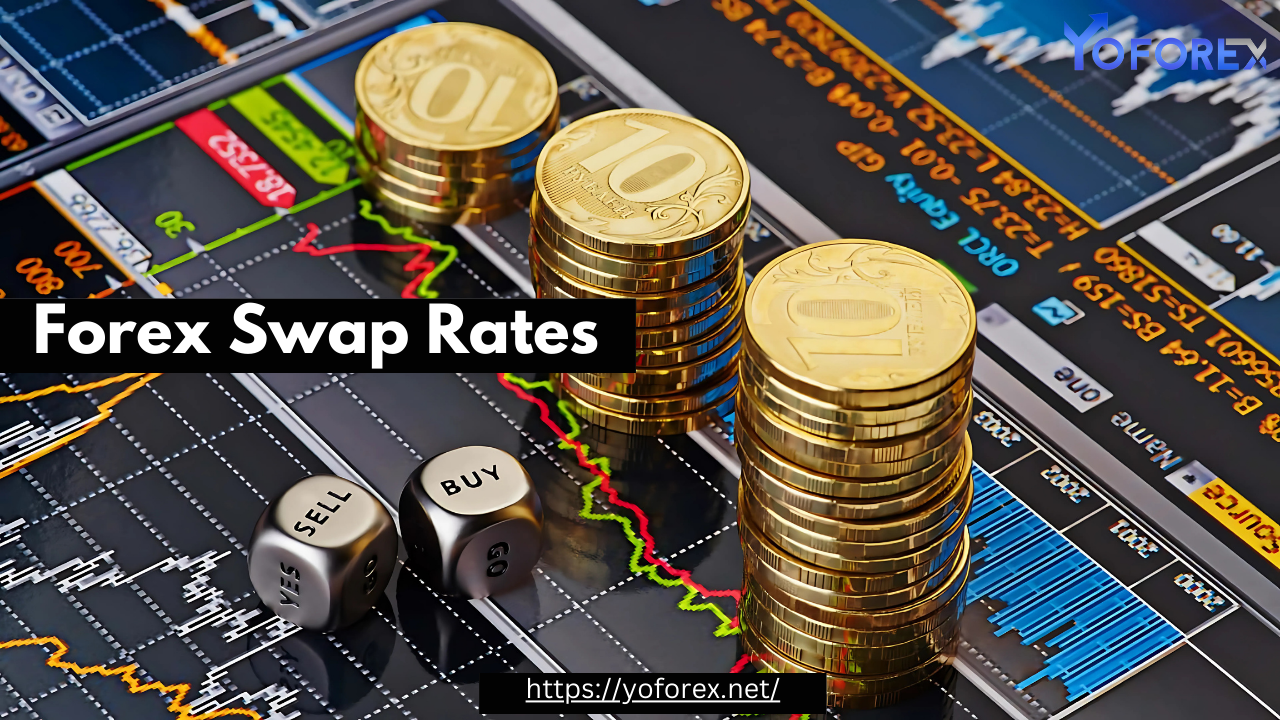Forex trading is a popular financial activity that involves buying and selling currency pairs. While most traders focus on aspects like technical analysis, chart patterns, and fundamental news, an often overlooked but essential component is the forex swap rate. Understanding forex swap rates can be the difference between profitability and unexpected losses in long-term trading strategies. This guide will help you understand what forex swap rates are, how they work, and their potential impact on your trades.

What Are Forex Swap Rates?
A forex swap rate, also known as a rollover rate, is the interest rate differential between the two currencies in a currency pair. When you hold a position overnight in the forex market, your broker either pays you or charges you a swap fee based on the interest rate differential between the two currencies. This is essentially the cost or gain associated with carrying a trade from one trading day to the next.
The forex market operates 24 hours a day, but positions held beyond 5:00 PM EST (or the broker’s cutoff time) are considered overnight positions. At this point, the swap rate is applied.
How Are Swap Rates Calculated?
Swap rates depend on three main factors:
- Interest Rate Differential: Each currency has an associated interest rate determined by its central bank. The swap rate is influenced by the difference between the interest rates of the two currencies in the pair.
- Trade Direction:
- If you are long (buying) a currency with a higher interest rate and short (selling) a currency with a lower interest rate, you might earn a positive swap.
- Conversely, if you are long a currency with a lower interest rate and short a currency with a higher interest rate, you may incur a negative swap.
- Broker Markup: Some brokers add a markup to the swap rate, which can reduce your earnings or increase your costs.
Here’s a basic formula for calculating swap rates:
Keep in mind that brokers often provide swap rates directly on their trading platforms, making it easier for traders to evaluate potential costs or gains.
Example of Forex Swap Rates
Let’s assume you are trading the EUR/USD pair:
- The interest rate for the Euro (EUR) is 3%.
- The interest rate for the US Dollar (USD) is 1%.
If you go long on EUR/USD, you are effectively buying the Euro and selling the US Dollar. In this scenario, you might earn a positive swap because you are holding a higher interest rate currency (Euro) while shorting a lower interest rate currency (USD).
Conversely, if you go short on EUR/USD, you may incur a negative swap because you are holding the lower interest rate currency (USD) while shorting the higher interest rate currency (Euro).
Types of Forex Swap Rates
- Positive Swap: This occurs when the interest rate of the currency you are holding is higher than the interest rate of the currency you are shorting. In this case, your broker may pay you a swap fee.
- Negative Swap: This occurs when the interest rate of the currency you are holding is lower than the interest rate of the currency you are shorting. Here, you will be charged a swap fee by your broker.
- Triple Swap Wednesdays: Most brokers apply three days’ worth of swap fees on Wednesdays to account for the weekend. This can significantly impact your trading costs or earnings if you hold positions through midweek.
How Forex Swap Rates Affect Your Trades
Forex swap rates can impact your trading strategy in several ways:
- Long-Term Trading Costs:
- For traders who hold positions for days, weeks, or months, swap fees can accumulate and significantly affect profitability.
- It’s crucial to factor in swap rates when calculating the potential costs of your trades.
- Carry Trade Opportunities:
- Carry trading is a strategy where traders aim to profit from the interest rate differential between two currencies.
- Traders go long on high-yielding currencies and short on low-yielding currencies to earn positive swap fees.
- Position Management:
- Swap rates might influence the decision to hold or close positions overnight.
- For short-term traders, avoiding overnight positions eliminates the need to worry about swap rates.
Reducing the Impact of Negative Swap Rates
Here are some tips to manage the impact of negative swap rates:
- Choose the Right Broker: Brokers’ swap rates vary, so choose a broker with competitive rates. At YoForex.net, for example, we provide transparent and competitive swap rates to ensure you have clear insights into your trading costs.
- Monitor Swap Rates: Stay informed about the current swap rates for the currency pairs you trade. Many brokers update these rates daily.
- Trade During Active Hours: Closing positions before the rollover period (5:00 PM EST) can help avoid swap fees.
- Focus on Positive Swap Trades: Build strategies around earning positive swaps by selecting currency pairs with favorable interest rate differentials.
- Use Swap-Free Accounts: Some brokers offer swap-free accounts, especially for traders following Islamic finance principles. These accounts eliminate swap fees but may involve other charges.
Conclusion
Forex swap rates are an integral part of trading that can significantly impact your bottom line, especially if you hold positions overnight. By understanding how swap rates work and how they are calculated, you can better manage your trades and develop strategies to mitigate their impact. Whether you aim to minimize costs or maximize gains through carry trading, being aware of swap rates is essential for every forex trader.
At YoForex.net, we strive to empower traders with the tools and knowledge they need to succeed. Our competitive swap rates, advanced trading platforms, and educational resources make it easier for you to navigate the complexities of the forex market. Visit YoForex.net today to learn more and start trading with confidence.
Stay Updated & Download: https://yoforex.net/understanding-forex-swap-rates/

